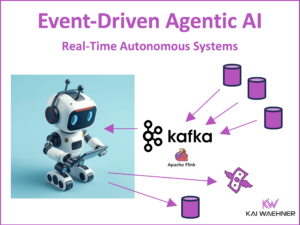“Getting Started with NoSQL” is a new book by PACKT PUBLISHING. It gives an introduction to different NoSQL concepts and products. Besides, it explains the differences to SQL databases and when to use which one.
First, the book defines NoSQL and explains what it is and what it is not. Especially, the characteristics and differences compared to SQL are described. The next chapter explains most important NoSQL storage types: Column-oriented databases, document stores, key-value stores, and graph databases. Advantages and disadvantages of these concepts are explained in detail, before comparing most important NoSQL products such as Cassandra, Neo4j, MongoDB or Redis. A case study (which uses MongoDB) concludes the book to show how an implementation with a NoSQL database is different from using a relational database.
What I was missing in this book is a section about other NoSQL concepts such as XML databases or file-based storages such as HDFS (Hadoop Distributed File System).
With 150 pages, the book is not extensive, but sufficient. It is a good introduction to NoSQL databases for developers, architects and decision makers. If you dot not have any experiences with NoSQL databases, then this book is for you. If you are already familiar with different NoSQL concepts and products, you will not learn much new stuff, as the book is not going into deep details. Though, it is still a good overview for NoSQL concepts and products.
Best regards,
Kai Wähner (Twitter: @KaiWaehner)





